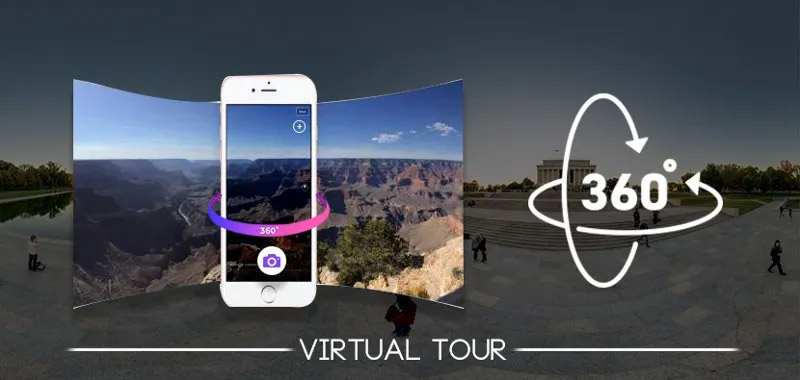In an age where technology reigns supreme, our ability to explore the world has evolved beyond our wildest dreams. With the click of a button or the swipe of a screen, we can visit far-flung destinations, historical landmarks, and cultural treasures, all without leaving the comfort of our homes. Virtual tours have become the modern-day traveler’s passport to the world. They offer convenience, accessibility, and a taste of what lies beyond our immediate surroundings. Yet, as enticing as virtual tours may be, they are merely a glimpse, not a true journey. In this post, we’ll explore the advantages of virtual tours for marketing and promotion of travel destinations, and also explain why nothing can truly replace the experience of being there in person.
The Missing Senses
Virtual tours capitalise on visual and auditory stimuli to provide an immersive experience, making them perfect for marketing. They can showcase a property or location from various angles and lighting conditions, allowing potential customers to explore in detail. This sensory engagement can be a powerful tool for marketing, as it allows customers to envision themselves in the space or destination, fostering a sense of connection and desire.
While this can be quite convincing, it neglects the other senses that play a crucial role in our understanding of a place. The feeling of the sun on your skin, the scent of exotic spices in a bustling market, or the taste of authentic street food – these sensory experiences are impossible to replicate through a screen. Being there in person allows you to engage all your senses, creating a fuller and more memorable encounter.
Limited Exploration
From a marketing perspective, virtual tours can be carefully designed to highlight the most attractive features of a property or location. This means you can guide your potential customers to the aspects you want to emphasise. By strategically curating the virtual tour experience, you can control the narrative and present your product or destination in the best possible light.
Virtual tours guide you along predetermined paths, showcasing what the tour creator wants you to see. While this can be informative, it restricts your ability to explore freely and stumble upon hidden gems, interact with locals, or make serendipitous discoveries. Real journeys are full of surprises and unexpected encounters that make the experience richer and more personal.
The Human Connection
In marketing, building a connection with your audience is essential. Virtual tours can incorporate elements of storytelling, allowing you to introduce characters or guides who can narrate the experience. This human touch can create an emotional connection between your audience and your product or destination, increasing the likelihood of conversion.
Travel isn’t just about places; it’s about people. Meeting new people, learning about their cultures, and forging connections are some of the most rewarding aspects of travel. Virtual tours can’t replicate the warmth of a local’s smile, the sincerity of a conversation with a fellow traveler, or the hospitality of a host in a foreign land. These connections are an integral part of any journey.
Authenticity and Perspective
Virtual tours offer an opportunity to showcase authenticity, another crucial element in modern marketing. Transparency and authenticity are highly valued by consumers. By providing an unfiltered view of your property or destination, you can build trust with your audience. Virtual tours can also allow customers to see themselves as part of a larger narrative, such as experiencing a destination like a local. This perspective can be a powerful marketing tool, as it appeals to the desire for authentic and immersive experiences.
Virtual tours are curated experiences, crafted to present a place in a particular light. While this can be informative, it can also be misleading. Real travel allows you to form your own opinions and perspectives based on your personal experiences. It enables you to understand the complexities and nuances of a place, rather than relying on a scripted narrative.
Memories That Last
In marketing, the goal is often to create a lasting impression. Virtual tours can be used to create memorable experiences that stick in the minds of your audience. By providing an interactive and engaging virtual tour, you can leave a lasting impression and increase brand recognition.
While virtual tours can provide interesting snapshots, the memories they create are often fleeting. Being physically present in a place leaves a lasting impression. The feeling of standing in front of an iconic monument, the thrill of conquering a challenging hike, or the laughter shared with new friends – these are the memories that stay with you for a lifetime.

